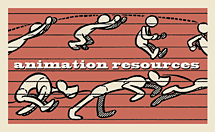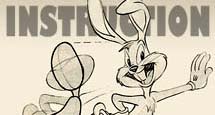This posting is a stub. You can contribute to this entry by providing information through the comments link at the bottom of this post. Please organize your information following the main category headers below….
Birth/Death
Death: October 1976
Occupation/Title
Teacher, Master Draftsmen
Bio Summary
He was among the first graduating class of Chouinard. He continued to study and paint landscapes until 1930 when he returned to Los Angeles and was hired by Mrs. Chouinard as life drawing instructor for the next four years. His education as a drawing teacher really began when trying to solve some of the problems inherent to this new animation, a new kind of drawing unique in the history of art. Thanks to the interest of Mr. Disney, Don spent the next ten years attempting to solve these problems in the analysis of action. By 1941 war in Europe had seriously curtailed studio activity, and it became evident that the Disney school had served its purpose. The procedures in thinking and teaching that proved successful in the specialized animation industry proved workable to the professional artist no matter what his particular field. At the end of the war he continued this approach to drawing and composition to a deluge of returning G.I.s. In 1947 Don moved to the Northwest with his family for a change from the strain of all the teaching but returned to Chouinard in 1949. In 1950 Walt Disney engaged Don to investigate the possibilities of making films on various aspects of art. Dividing his time between Disney and Chouinard, his research intended as a film eventually ended up as a book, “The Art of Animation.” Don also held a one evening a week drawing class for a short while at the Ray Patin Animation Studios and continued to teach drawing and composition classes until 1970 at Chouinard. He served there as the head of the Fine Arts Department, President of the Faculty Society, and Member and second Vice-President of the Board of Trustees of the Chouinard Art Institute. After writing and compiling drawings for four years, his book on composition, “Composing Pictures, Still and Moving” was published in 1970 by Van Nostrand Reinhold Company. Later in 1971 Don retired and moved back to the Northwest where he continued to enjoy drawing and painting as long as he could. He died in October of 1976 after struggling to recover from several strokes.
Early Life/Family
Education/Training
Engineering student from Stanford University
Career Outline
Originally starting at Stanford University, he gave up the life of an engineer and enrolled at Chouinard Art Institute in 1923. He later he instructed perspective in return for tuition money. In 1932 during the formative years of the Disney studio he was commissioned by Walt Disney to instruct evening classes to improve the drawing abilities of his artists. He was sent on a country-wide talent search and in 1934 was called upon to review and judge the portfolios of potential new Disney artists. In seven years he personally examined over 35,000 portfolios. Due to the events of Pearl Harbor, Don went to work as a production illustrator in the Tool Design department of Douglas Aircraft Company and then onto the Interstate Aircraft Company and assisted in the designing of the main retractable landing gear of an experimental Navy plane. In the winter of 1942 Don was prevailed upon to conduct a one evening a week drawing class at Chouinard an his class grew.
Comments On Style
Taught the animators to explore the possibilities of each character’s emotions in a given situation, then add the factors of the character’s mental set and his physical characteristics. Only after all these elements were analyzed and evaluated by the animator could he [the animator] make his contribution. He would call into play his drawing ability, his ability to caricature action, and his ability to predict the possible reaction of the audience to a scene. He was expected to sense when to modify the vigor of his animation if the following scene peaked to a gag. This kind of complex planning was completely foreign to the approach other studios had to animation during the early 1930s.?
Influences
From the first time he smelled the aroma turpentine in an art school that he visited, Don fell in love with painting and drawing. Passion for Fine Art.
Personality
Extremely patient, articulate, and with an excellent memory.
Marc Davis: “was a very inspirational man”
Don Graham certainly was unique, whatever the individual consensus, and for most a source of constant support and stimulation. In the words of veteran animator Marc Davis: “A true scholar of the art of drawing who knew as much about art as anybody I’ve ever come in contact with. Don gave so much and offered so much and not too many people realize that.
Anecdotes
Don could break down a complex drawing problem into understandable components. To Shamus, Don Graham was “probably the greatest art teacher of our time. Unlike the average instructor, he also had great talent as a draftsman. His drawings looked like the work of some of the Italian masters in their grace and power. The range of his knowledge was incredible, one minute discussing Cézanne and his point of view, the next showing us a Giotto where he’d tried to make a simulation of animation by painting four angels in poses like in-betweens, all leading up to a key pose.”
He taught a sense of graphics – how to put things down. He taught you to see things like what was flat on a piece of paper and what had dimension on a piece of paper and how to do that and how to stage things, in regards to living creatures.”
Animation director Evert Brown recalls:
I studied with Don at Chouinard Art Institute in 1960. He is a great drawing teacher. At the time I was in his class, I never knew he worked at Disney. He never talked about the studio or his duties. He really understood how to convey to his students the importance of line quality, porportions and the art of drawing. Now that I am a teacher, I see the difficulty of impressing young minds. I feel honored to have been taught by Don.
Miscellaneous
Don started out in the beginning years of the Art Institue of Chouinard as the janitor, “earning his keep” as he would say, and slept in the school’s bathtub to minimize his rent.
Filmography
N/A
Published Books:
1. Graham, Don, The Art of Animation, unpublished
2. Graham, Don, transcripts of action analysis class at the Walt Disney Studio, June 21, 1937
3. Graham, Don, transcripts of action analysis class with Bill Tytla at the Walt Disney Studio,
June 28, 1937
Honors
Annie Award: Winsor McCay Award 1982
Related Links
The Chouinard Foundation : http://www.postartgroup.com/chouinard/hm.html
Disney.com: http://disney.go.com/home/today/index.html
AnimationArtist.com: http://animationartist.com/InsideAnimation/DavidJohnson/SchoolPart1.html
Carlos Baena site: http://www.carlosbaena.com/DonGraham.html ?
ScratchPost: http://www.thescratchpost.com/features/july01/features1.shtml
Bibliographic References
http://www.anticipation.info/texte/lasseter/principles5-6.html
http://donaldwgraham.com/biography.html
http://www.animationartist.com/columns/DJohnson/School01/school01.htm
Contributors To This Listing
Todd A. DeJong
To make additions or corrections to this listing, please click on COMMENTS below…




























